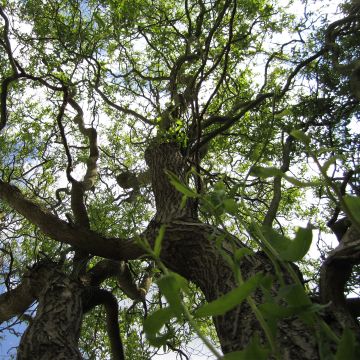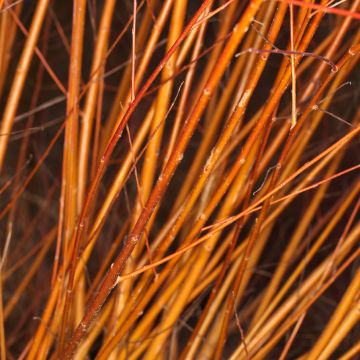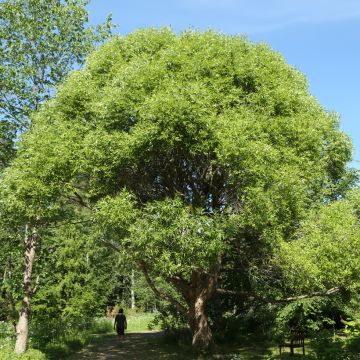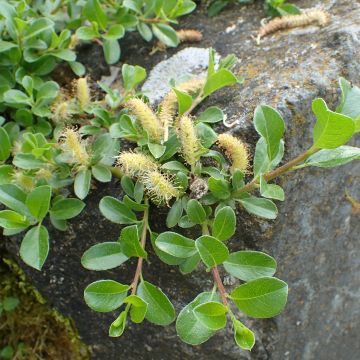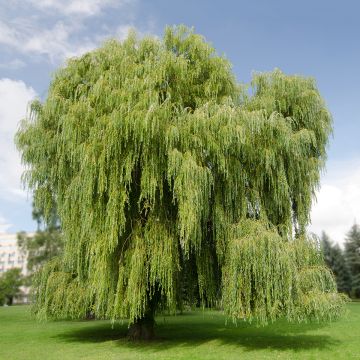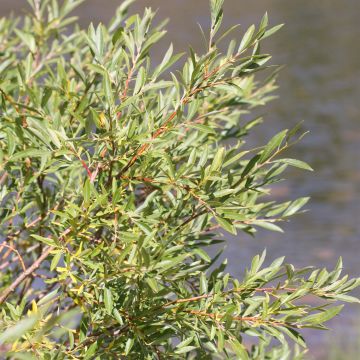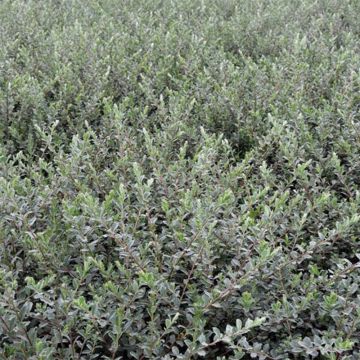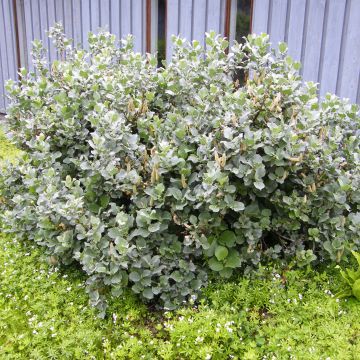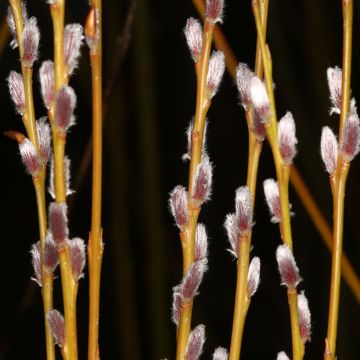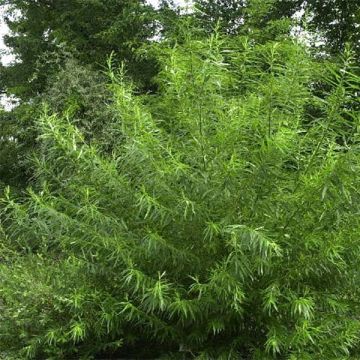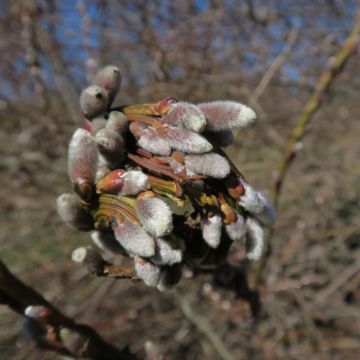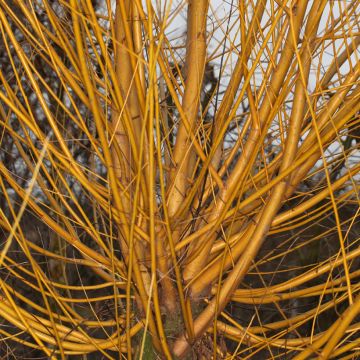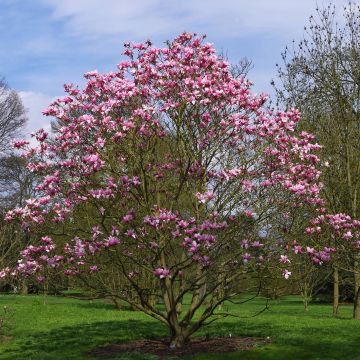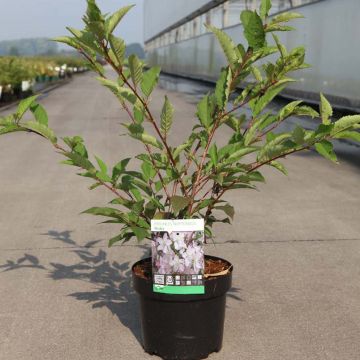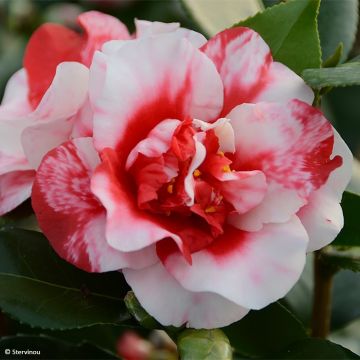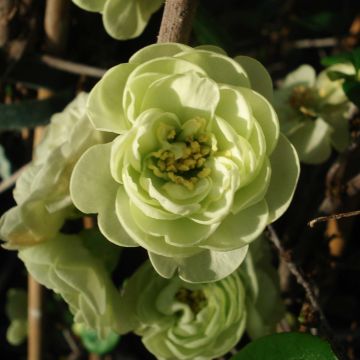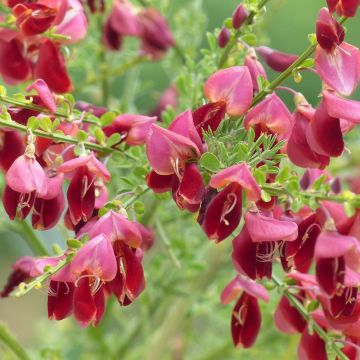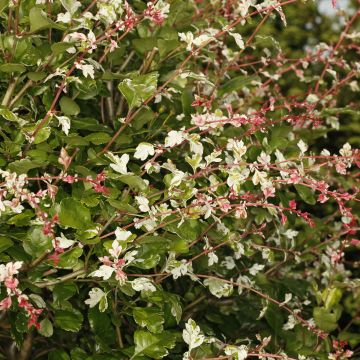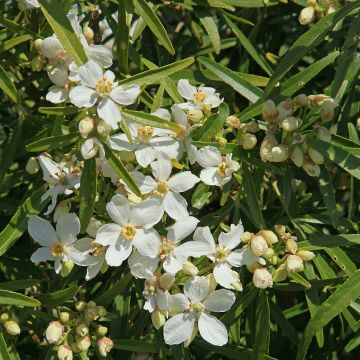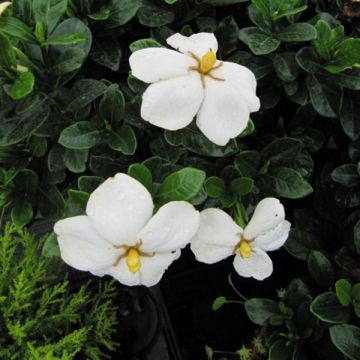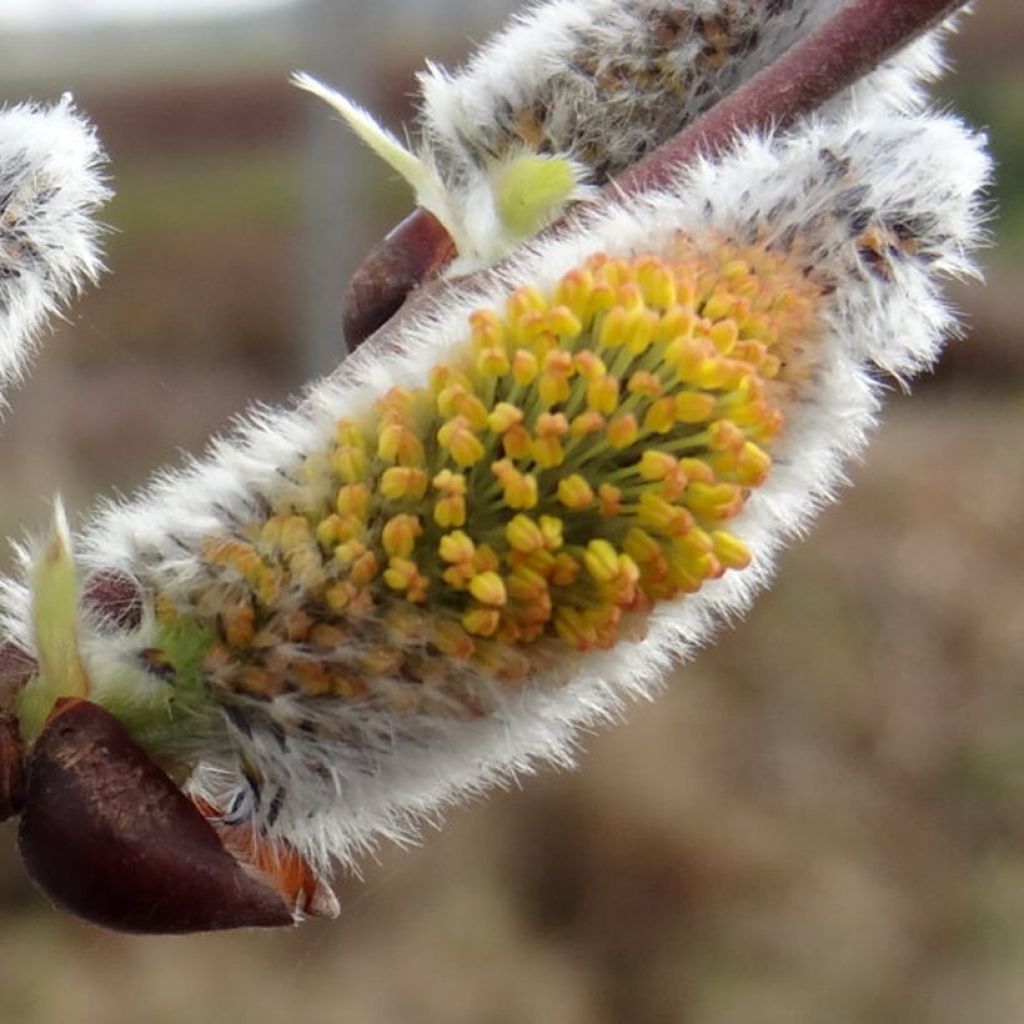

Salix caprea Gold-Bienenkätzchen - Great Sallow
Salix caprea Gold-Bienenkätzchen - Great Sallow
Salix caprea Gold-Bienenkätzchen
Great Sallow, Goat Willow
Why not try an alternative variety in stock?
View all →This plant carries a 24 months recovery warranty
More information
We guarantee the quality of our plants for a full growing cycle, and will replace at our expense any plant that fails to recover under normal climatic and planting conditions.
From €5.90 for pickup delivery and €6.90 for home delivery
Express home delivery from €8.90.
Delivery to Corse prohibited: UE law prohibits the import of this plant from mainland France to Corse as part of the fight against Xylella fastidiosa. Please accept our sincere apologies.
More information
Does this plant fit my garden?
Set up your Plantfit profile →
Description
Salix caprea Gold-Bienenkätzchen is a variety of Goat Willow that is both decorative and beneficial to wildlife thanks to its nectar-rich flowers which start from March, and last for several weeks. This Willow forms a large bush that quickly reaches 4m (13ft) in height due to its rapid annual growth. Extremely hardy, this bush is particularly easy to cultivate. It adapts to most soils, whether acidic, neutral, or limestone, moist to moderately dry, and grows in full sun or partial shade. Its very natural appearance will fit perfectly in a wild-inspired garden and its silky catkins are stunning in bouquets.
Salix caprea belongs to the family of Salicaceae, which historically included only Willows and Poplars, and which now, based on developments in botanical classification, includes 55 genera, most of which are completely unknown, except perhaps for Azara, Idesia (I. polycarpa) with beautiful cordate leaves), and Poliothyrsis (editor's note: more interesting for its rarity than its actual ornamental interest, from what I have observed in my own garden). There are numerous species of Willows (over 350) as well as many ornamental cultivars with decorative leaves, flowers, or wood. The Salix caprea is a deciduous botanical species native to central Europe and central and northern Asia. The Goat Willow is a pioneer and ubiquitous species, a light-loving species less exclusively associated with wet areas than most other species in the Salix genus.
The cultivar Gold-Bienenkätzchen is a male Willow whose German name (which could be translated word for word as golden catkin) summarizes its main interest well. This bush produces beautiful catkins in early season (March), about 4.5 cm (2in) long, of a very soft silky grey which brightens with golden stamens, clearly visible on the still bare wood. Lasting several weeks, this superb nectar-rich flowering attracts bees, delighted to find it during a season when food sources are still scarce. With rapid growth (50 to 80 cm (20 to 32in) per year), this bush, a little taller than wide, will quickly reach its mature dimensions, about 4m (13ft) in height and 2.5 to 3m (8 to 10ft) in width. It bears elongated, green deciduous leaves.
Its main advantage, in addition to its rapid growth and its ability to withstand severe pruning, is its adaptability to most soils, whether acidic, neutral, or limestone. It appreciates moist soils but can tolerate a certain level of drought. It grows well in full sun and also adapts to partial shade, and lastly, it is a very hardy plant, at least down to -30°C.
It is typically a beginner's plant that requires almost no care and will reward you with beautiful flowering branches that you can use in bouquets. With its natural appearance, this Willow will fit perfectly in a rural environment or in a wild-style garden.
This hardy Willow, which is beneficial for bees and butterflies, will blend well in a mixed bed with other wild looking plants. Plant it alongside Spindle trees, such as Euonymus planipes, whose foliage takes on magnificent autumn colours and produces beautiful decorative fruits at the end of the year. Cornus officinalis is also one of these plants with a natural appearance, even though it is actually an exotic plant, originating from the Far East. It has many qualities: fragrant yellow flowering in late winter evolving into small decorative and edible red fruits, deciduous foliage that turns beautifully purple in autumn, and decorative bark to create a beautiful winter scene. With its large size (about 6m (20ft)) it will form a beautiful background for our Willow. And for the foreground, nothing beats Snowberries to compose the first layer of vegetation. While their flowering is insignificant, their fruits are decorative for many months.
Properties: Like all Willows, this variety contains a substance in its bark similar to aspirin. It is highly nectar-rich and honey-bearing: bees that gather nectar from it produce a honey with a golden yellow colour, iridescent with green, which takes on amber to beige reflections as it ages. Its flavour is sweet, both floral and slightly woody. Relatively rare, this honey is mainly produced in the west of France. Its foliage was once used as fodder for goats.
Report an error about the product description
Plant habit
Flowering
Foliage
Botanical data
Salix
caprea
Gold-Bienenkätzchen
Salicaceae
Great Sallow, Goat Willow
Cultivar or hybrid
Other Willow - Salix
Planting and care
Plant the Gold-Bienenkätzchen Willow in full sun or partial shade. It is undemanding in terms of soil, as long as it has a certain depth to allow the bush to find some moisture in case of drought. In hot regions, once the plant is established, a thorough watering every 15 days or 3 weeks will be sufficient. It will adapt equally well to light, rocky and sandy soil as well as heavy and clayey, very moist soil. Limestone is not a problem. Ideally, at planting, use a mixture composed of half compost and half garden soil. It is perfectly resistant to cold and heavy frost. To promote a bushy habit and the formation of catkin-bearing branches, prune fairly short after flowering, every year.
Planting period
Intended location
Care
This item has not been reviewed yet - be the first to leave a review about it.
Spring-flowering shrubs
Haven't found what you were looking for?
Hardiness is the lowest winter temperature a plant can endure without suffering serious damage or even dying. However, hardiness is affected by location (a sheltered area, such as a patio), protection (winter cover) and soil type (hardiness is improved by well-drained soil).

Photo Sharing Terms & Conditions
In order to encourage gardeners to interact and share their experiences, Promesse de fleurs offers various media enabling content to be uploaded onto its Site - in particular via the ‘Photo sharing’ module.
The User agrees to refrain from:
- Posting any content that is illegal, prejudicial, insulting, racist, inciteful to hatred, revisionist, contrary to public decency, that infringes on privacy or on the privacy rights of third parties, in particular the publicity rights of persons and goods, intellectual property rights, or the right to privacy.
- Submitting content on behalf of a third party;
- Impersonate the identity of a third party and/or publish any personal information about a third party;
In general, the User undertakes to refrain from any unethical behaviour.
All Content (in particular text, comments, files, images, photos, videos, creative works, etc.), which may be subject to property or intellectual property rights, image or other private rights, shall remain the property of the User, subject to the limited rights granted by the terms of the licence granted by Promesse de fleurs as stated below. Users are at liberty to publish or not to publish such Content on the Site, notably via the ‘Photo Sharing’ facility, and accept that this Content shall be made public and freely accessible, notably on the Internet.
Users further acknowledge, undertake to have ,and guarantee that they hold all necessary rights and permissions to publish such material on the Site, in particular with regard to the legislation in force pertaining to any privacy, property, intellectual property, image, or contractual rights, or rights of any other nature. By publishing such Content on the Site, Users acknowledge accepting full liability as publishers of the Content within the meaning of the law, and grant Promesse de fleurs, free of charge, an inclusive, worldwide licence for the said Content for the entire duration of its publication, including all reproduction, representation, up/downloading, displaying, performing, transmission, and storage rights.
Users also grant permission for their name to be linked to the Content and accept that this link may not always be made available.
By engaging in posting material, Users consent to their Content becoming automatically accessible on the Internet, in particular on other sites and/or blogs and/or web pages of the Promesse de fleurs site, including in particular social pages and the Promesse de fleurs catalogue.
Users may secure the removal of entrusted content free of charge by issuing a simple request via our contact form.
The flowering period indicated on our website applies to countries and regions located in USDA zone 8 (France, the United Kingdom, Ireland, the Netherlands, etc.)
It will vary according to where you live:
- In zones 9 to 10 (Italy, Spain, Greece, etc.), flowering will occur about 2 to 4 weeks earlier.
- In zones 6 to 7 (Germany, Poland, Slovenia, and lower mountainous regions), flowering will be delayed by 2 to 3 weeks.
- In zone 5 (Central Europe, Scandinavia), blooming will be delayed by 3 to 5 weeks.
In temperate climates, pruning of spring-flowering shrubs (forsythia, spireas, etc.) should be done just after flowering.
Pruning of summer-flowering shrubs (Indian Lilac, Perovskia, etc.) can be done in winter or spring.
In cold regions as well as with frost-sensitive plants, avoid pruning too early when severe frosts may still occur.
The planting period indicated on our website applies to countries and regions located in USDA zone 8 (France, United Kingdom, Ireland, Netherlands).
It will vary according to where you live:
- In Mediterranean zones (Marseille, Madrid, Milan, etc.), autumn and winter are the best planting periods.
- In continental zones (Strasbourg, Munich, Vienna, etc.), delay planting by 2 to 3 weeks in spring and bring it forward by 2 to 4 weeks in autumn.
- In mountainous regions (the Alps, Pyrenees, Carpathians, etc.), it is best to plant in late spring (May-June) or late summer (August-September).
The harvesting period indicated on our website applies to countries and regions in USDA zone 8 (France, England, Ireland, the Netherlands).
In colder areas (Scandinavia, Poland, Austria...) fruit and vegetable harvests are likely to be delayed by 3-4 weeks.
In warmer areas (Italy, Spain, Greece, etc.), harvesting will probably take place earlier, depending on weather conditions.
The sowing periods indicated on our website apply to countries and regions within USDA Zone 8 (France, UK, Ireland, Netherlands).
In colder areas (Scandinavia, Poland, Austria...), delay any outdoor sowing by 3-4 weeks, or sow under glass.
In warmer climes (Italy, Spain, Greece, etc.), bring outdoor sowing forward by a few weeks.

































